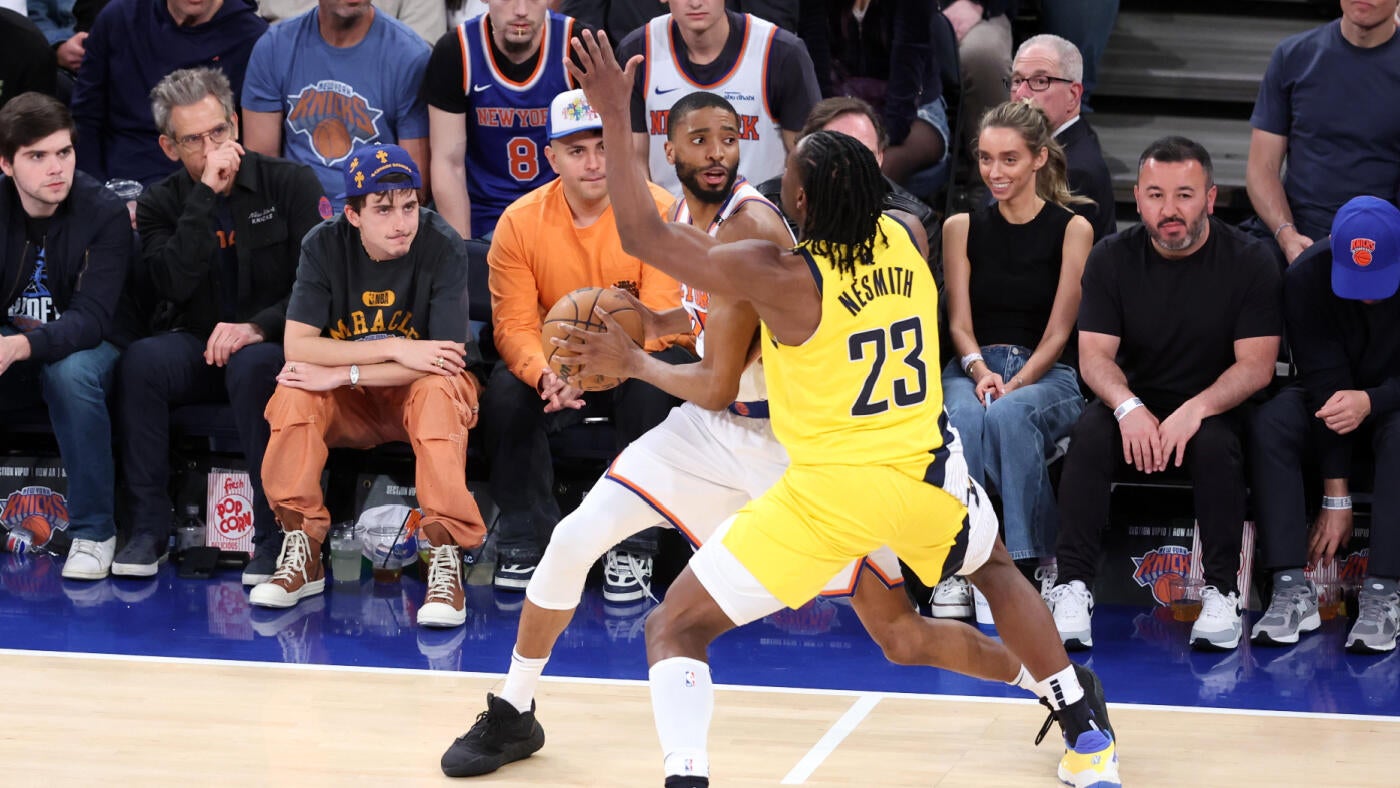Knicks vs. Pacers is a 100 mph chess match — and Indiana’s got New York in check


NEW YORK — Before the Indiana Pacers took a 2-0 lead in the Eastern Conference finals on Friday, coach Rick Carlisle contested the notion that their distinctive style of play requires a certain style of player.
“Not every player we have on our team is a perfect fit with exactly what we do,” Carlisle said. “But coaching is about taking some parts that aren’t necessarily identical and finding a way to bring out the strengths of those players to meld them with the rest, and so we try to do that.”
Carlisle resists the idea of being a “system coach,” and he stressed that his job is to maximize the roster that he’s given. These Pacers, though, have unquestionably developed an identity. They are unrelenting with their speed, ball movement, player movement and ball pressure. It is not easy to play this way. It is demanding.
Indiana’s second victory of the week at Madison Square Garden — 114 to 109 — was far less dramatic and astonishing than the first. Once again, though, the game was up for grabs down the stretch and the Pacers kept playing their way. With less than three minutes to go in the fourth quarter, Tyrese Haliburton grabbed a defensive rebound and, instead of killing clock, threw a perfect outlet pass that hit Pascal Siakam in stride for an easy layup on the break.
In the second round, the Knicks started most of the games slowly, but were able to goad the Boston Celtics into stagnant possessions, ill-advised shots and costly turnovers. Against the Pacers, they have not found nearly the same success defensively. Mitchell Robinson gave Indiana some trouble in the first half, but Siakam kept the Pacers afloat and they collectively found their flow. Indiana didn’t need another another fourth-quarter explosion from Aaron Nesmith down the stretch, in part because T.J. McConnell put tons of pressure on New York’s defense early in the fourth quarter. In this matchup, defending the first action well is not enough. The Pacers will quickly run something else, then something else, and the Knicks have to figure out how to keep up.
“They’re not going to stop,” New York wing Mikal Bridges said.
Bridges said that the Knicks have to improve their communication defensively and execute their coverages better, but he’d said the same thing in between Games 1 and 2. He also said that they might be “playing a bit too soft at the beginning of halves.” New York’s starters are getting torched to the tune of 155.1 points per 100 possessions during this series, and it’s fair to wonder why coach Tom Thibodeau hasn’t put Robinson or Miles McBride in the first five yet. Regardless of what Thibodeau does with the rotation going forward, though, the Pacers have a massive depth advantage, which pairs well with their commitment to their high-octane system.
“It’s so important, our speed and the way we play, just wearing teams down,” Indiana wing Ben Sheppard said.
The way Indiana plays can be disorienting. It doesn’t run many sets, and many of its possessions look chaotic. The Pacers’ ballhandlers reject a lot of screens, and their screeners often “ghost” to the perimeter or slip into the paint before making contact. Everybody’s a screener, and almost everybody’s a ballhandler.
The amazing thing about Indiana’s offense, though, is that it is so steady. Largely thanks to Haliburton, the Pacers finished the regular season with a 13% turnover rate, the third-lowest mark in the NBA. That’s down to 12.1% in the playoffs and 8.5% in two games against the Knicks. Indiana committed one turnover in the fourth quarter of Game 1 and one turnover in the fourth quarter of Game 2. This is both incredibly impressive — teams that pass and move like this typically have to accept turnovers as a trade-off — and totally in keeping with its identity.
“We’re just trying to play our game,” Carlisle said. “You get in an environment like this where there’s so much noise and so much going on and so many distractions if you allow yourself to be distracted. We always talk about, ‘Let the noise and all this other stuff be something to help trigger a narrowed focus: on your teammates, on your job within the team.”
Carlisle said that the Pacers “held their composure very well through some runs and a lot of crowd noise and a lot of commotion” on Friday. They hunted Jalen Brunson and Karl-Anthony Towns, but not at the expense of their offensive rhythm. For long stretches, they got a good (or great) look virtually every time down the court.
“Us being here last year, playing at MSG doesn’t feel as big as it did last year,” Indiana guard Andrew Nembhard said. “I think we’re a little more comfortable in the moment.”
The Pacers had to call a couple of audibles in Game 2. Score-first wing Bennedict Mathurin, whose first-half minutes went poorly, didn’t see the floor in the second half, and third-string center Tony Bradley came in to battle Robinson on the boards after a rough stint from backup Thomas Bryant. New York changed its rotation, too — Robinson ended up playing slightly more than Towns — but it couldn’t consistently string stops together. After halftime, Indiana scored 138.3 points per 100 possessions, and that number was even higher (153.8 per 100) in Robinson’s minutes.
Given how close the first two games were — and the Knicks’ 5-1 record on the road during the playoffs — it would be premature to say New York’s defense has been exposed once and for all. With their season effectively on the line on Sunday, though, every miscommunication and blown coverage will be magnified.
New York needs to be more locked in than ever in Game 3. The Pacers know who they are, and they’re not going to beat themselves.

















